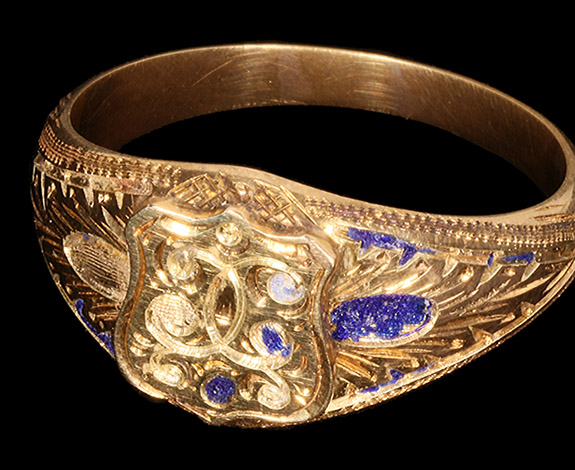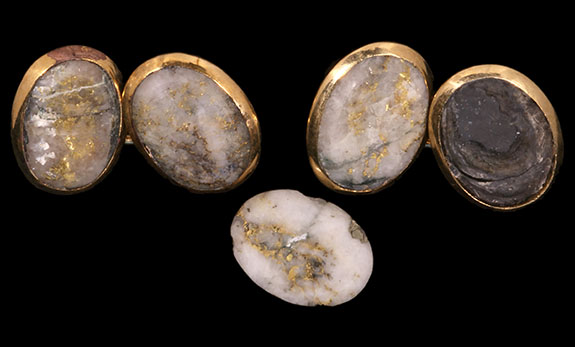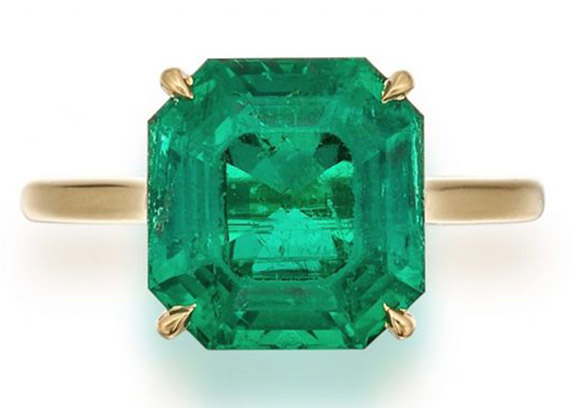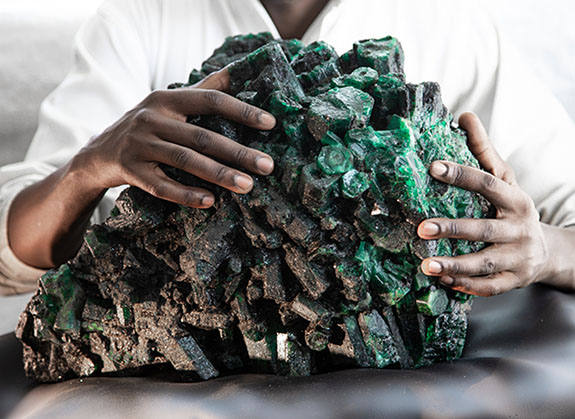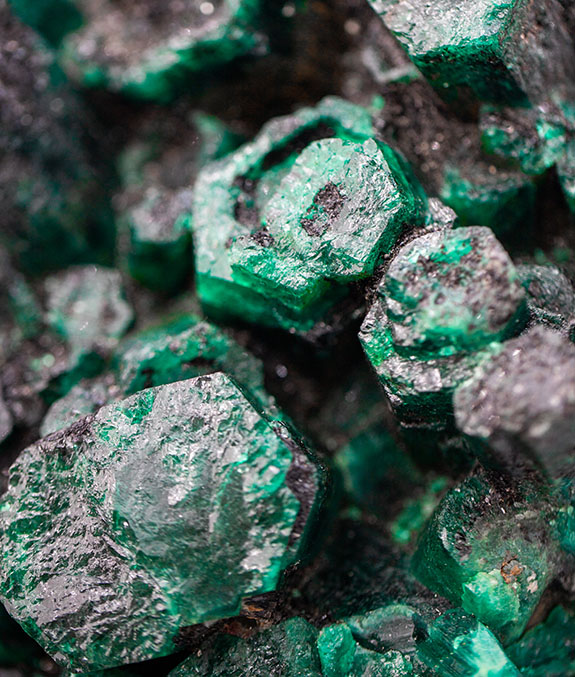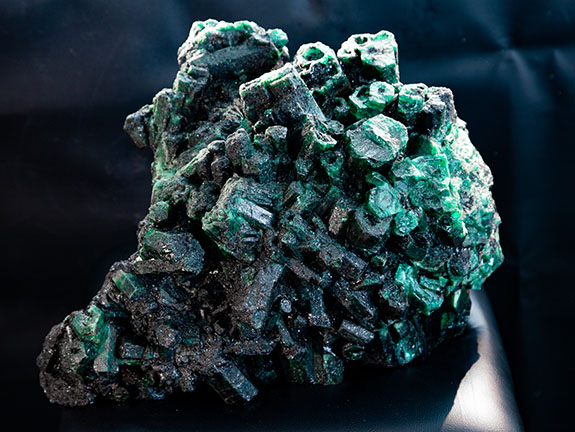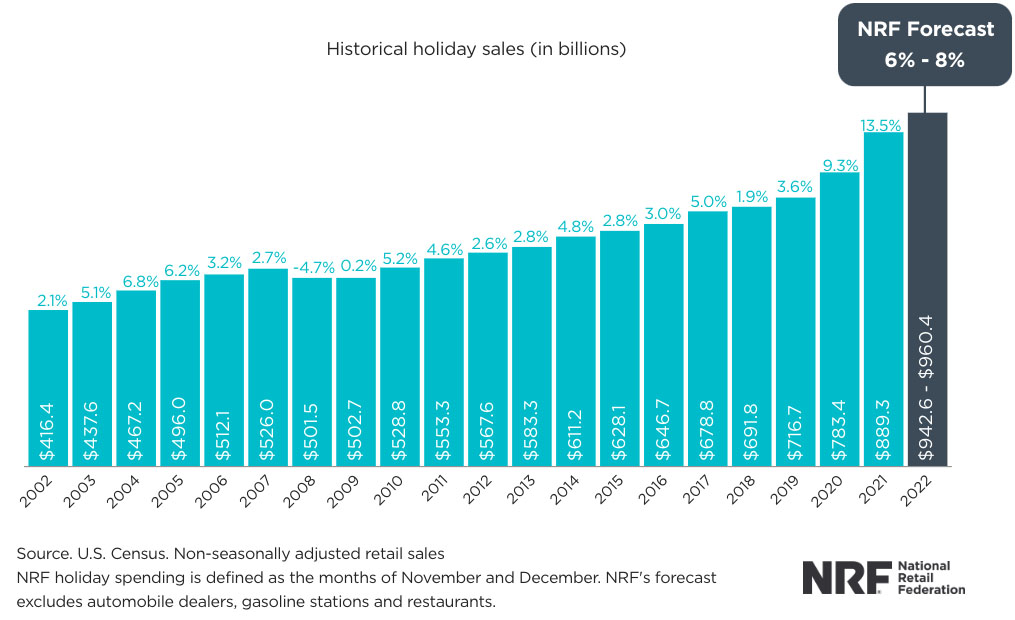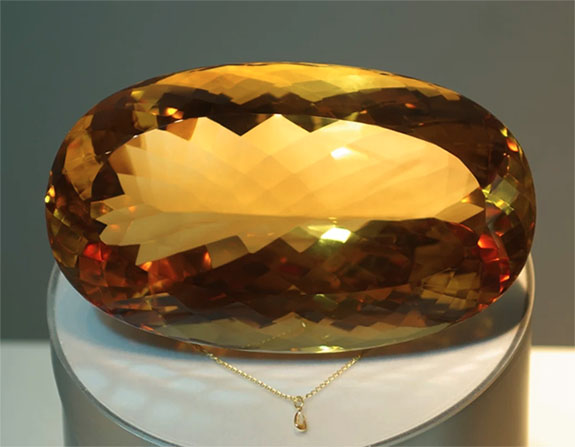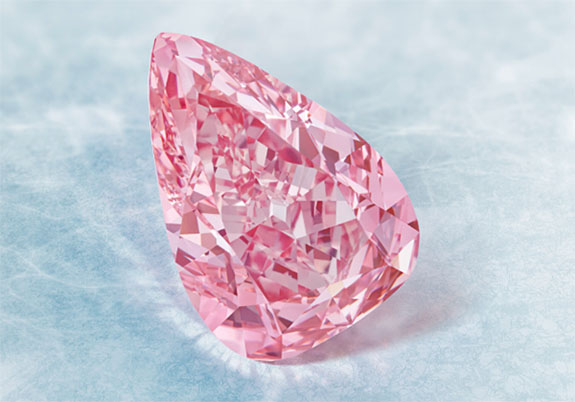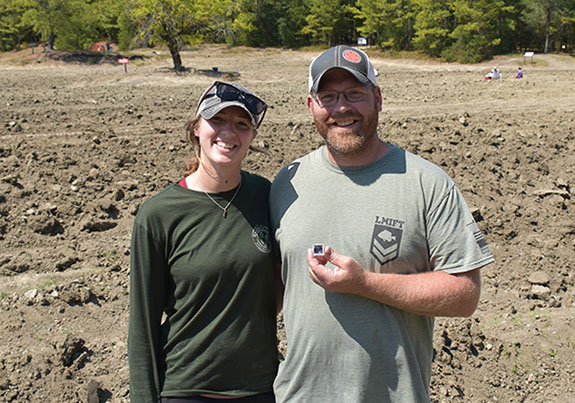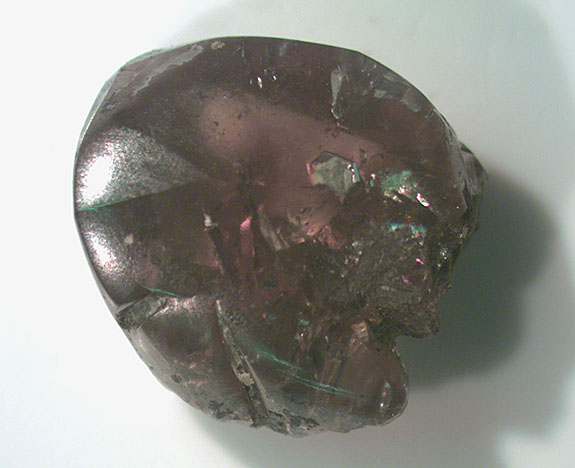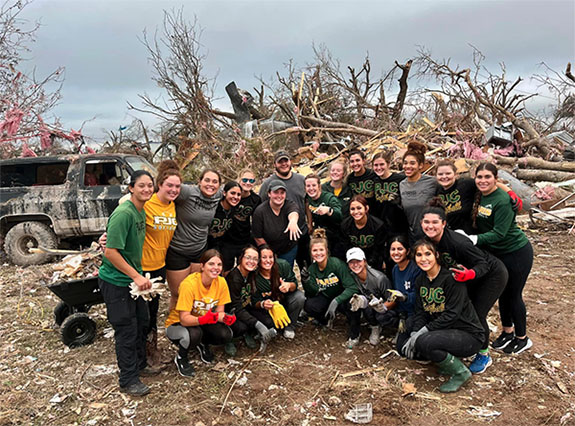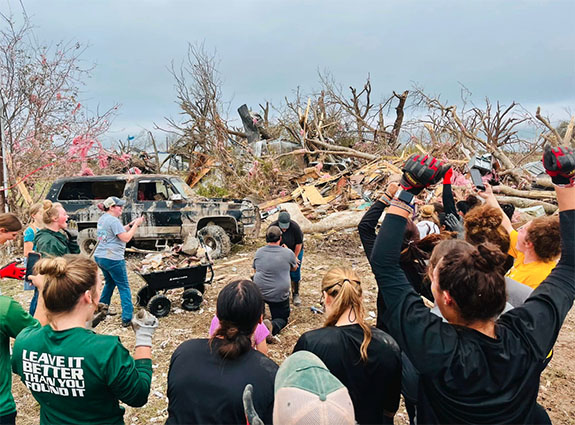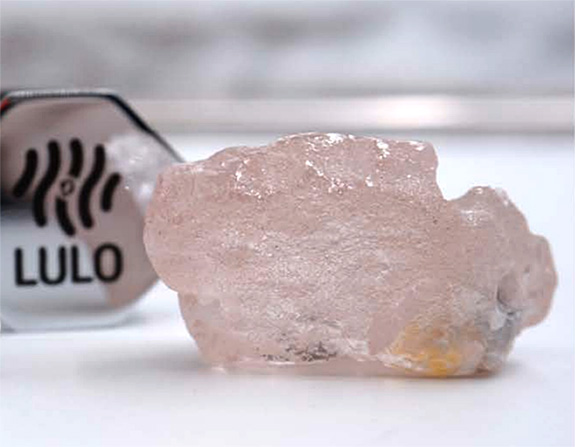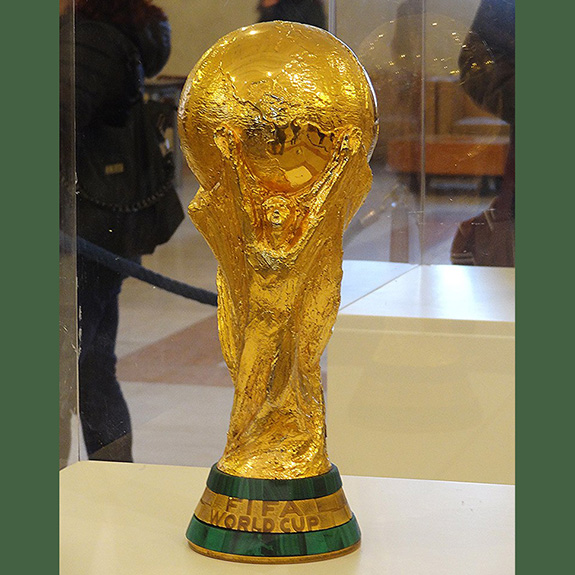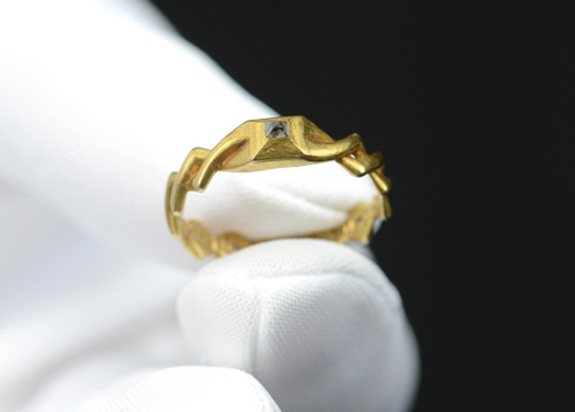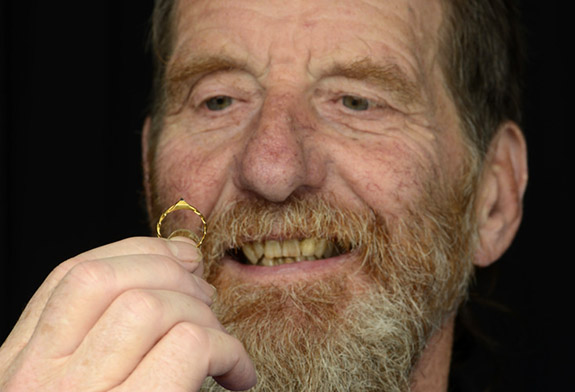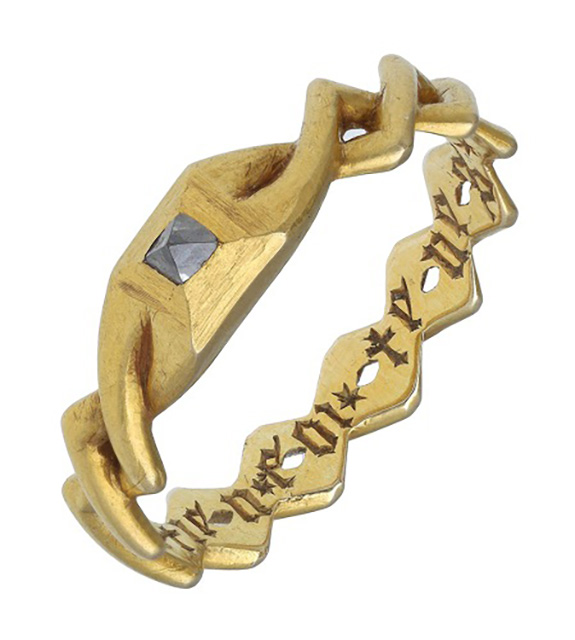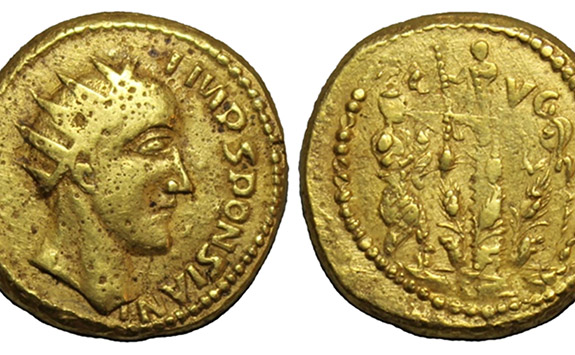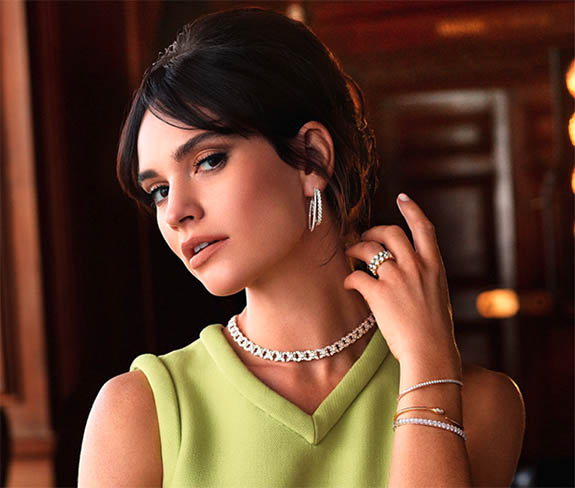November 1st, 2022
The colossal cushion-cut specimen you see here is the American Golden Topaz, a 22,892-carat Smithsonian resident that's widely recognized as one of the largest faceted gems of any type in the world. It's also a great example of November's official birthstone.
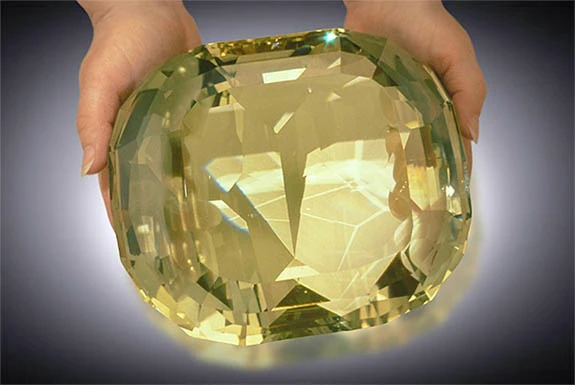
Despite its impressive address, life was not all glitz and glamor for this famous gemstone. In fact, its backstory includes a bunch of twists and turns, including a near-fatal fall barely 10 seconds into the cutting process.
Sourced in Minas Gerais, Brazil, the uncut topaz weighed 26 pounds (about 59,000 carats) and was described as a weathered stream-rounded cobble. The owner was University of Washington sociology professor and amateur rockhound Ed Borgatta, who possessed the basic skills to hone the stone down to 15 pounds, revealing the its rich golden-yellow coloring.
Borgatta eventually put the project in the hands of master cutter Leon Agee. Over the next two years, starting in early 1986, Agee would devote more than 500 hours to cutting and polishing what he privately called "The Beast." He had agreed to take on the project if he could complete the job during his spare time at his own pace.
“When I saw it, I was startled,” Agee told The Spokesman-Review in 1998. “I’d cut a 1,500-carat piece of quartz for a guy in Arkansas, but this was 20 times that size. I was awestruck.”
Working at this scale was a tremendous challenge for Agee. It took him six months to rig a cutting machine that could handle the massive stone.
As he began the cutting process, he used a standard epoxy to adhere the stone to the turntable.
“But 10 seconds into the cutting, the stone popped off and rolled around the top of the machine,” Agee recalled.
Luckily, he was able to snatch the massive stone before it crashed onto his basement floor. The impact could have fractured the stone, rendering the project a complete failure.
Agee resumed his work, this time using a heavy-duty 2-ton epoxy.
According to Agee, the Smithsonian got wind of the project and was interested in obtaining the gem — as long as its finished weight could beat out the then-record-holder, the 21,327-carat Brazilian Princess. (That stone was part of the collection curated by the American Museum of Natural History in New York City.)
Agee refused to weigh the gem until his work was completed. In the end, the 172-facet gem tipped the scales at a whopping 22,892 carats (10.09 lbs). About the size of a honeydew melon, the gem outweighed its rival by more than 1,500 carats. No jeweler's scale was equipped to handle a stone of that size, so he sought the help of the nearby Hanford Nuclear Reservation in Benton County, WA, so he could get a precise weight on a laboratory scale.
Agee admitted to The Spokesman-Review that he secretly pre-weighed the gem on a meat scale at a grocery store in Walla Walla and knew he had beaten the Brazilian Princess.
In May of 1988, both Agee and Borgatta were in attendance during the American Golden Topaz's dedication ceremony at the Smithsonian in Washington, DC. Exactly 30 years later, in May of 2018, Agee passed away at the age of 85.
The American Golden Topaz is part of a popular family of gemstones that can be seen in a wide array of warm colors, including brownish-yellow, orange-yellow and reddish brown. It’s also found in white, pale green, blue, gold and pink.
In addition to Brazil, topaz is mined in Mexico, Sri Lanka, Africa and China. Topaz is a talisman for the sign of Sagittarius and is the suggested gift for the 23rd or 50th wedding anniversary.
Credit: Image by NMNH Photo Services and digitally enhanced by SquareMoose.

Despite its impressive address, life was not all glitz and glamor for this famous gemstone. In fact, its backstory includes a bunch of twists and turns, including a near-fatal fall barely 10 seconds into the cutting process.
Sourced in Minas Gerais, Brazil, the uncut topaz weighed 26 pounds (about 59,000 carats) and was described as a weathered stream-rounded cobble. The owner was University of Washington sociology professor and amateur rockhound Ed Borgatta, who possessed the basic skills to hone the stone down to 15 pounds, revealing the its rich golden-yellow coloring.
Borgatta eventually put the project in the hands of master cutter Leon Agee. Over the next two years, starting in early 1986, Agee would devote more than 500 hours to cutting and polishing what he privately called "The Beast." He had agreed to take on the project if he could complete the job during his spare time at his own pace.
“When I saw it, I was startled,” Agee told The Spokesman-Review in 1998. “I’d cut a 1,500-carat piece of quartz for a guy in Arkansas, but this was 20 times that size. I was awestruck.”
Working at this scale was a tremendous challenge for Agee. It took him six months to rig a cutting machine that could handle the massive stone.
As he began the cutting process, he used a standard epoxy to adhere the stone to the turntable.
“But 10 seconds into the cutting, the stone popped off and rolled around the top of the machine,” Agee recalled.
Luckily, he was able to snatch the massive stone before it crashed onto his basement floor. The impact could have fractured the stone, rendering the project a complete failure.
Agee resumed his work, this time using a heavy-duty 2-ton epoxy.
According to Agee, the Smithsonian got wind of the project and was interested in obtaining the gem — as long as its finished weight could beat out the then-record-holder, the 21,327-carat Brazilian Princess. (That stone was part of the collection curated by the American Museum of Natural History in New York City.)
Agee refused to weigh the gem until his work was completed. In the end, the 172-facet gem tipped the scales at a whopping 22,892 carats (10.09 lbs). About the size of a honeydew melon, the gem outweighed its rival by more than 1,500 carats. No jeweler's scale was equipped to handle a stone of that size, so he sought the help of the nearby Hanford Nuclear Reservation in Benton County, WA, so he could get a precise weight on a laboratory scale.
Agee admitted to The Spokesman-Review that he secretly pre-weighed the gem on a meat scale at a grocery store in Walla Walla and knew he had beaten the Brazilian Princess.
In May of 1988, both Agee and Borgatta were in attendance during the American Golden Topaz's dedication ceremony at the Smithsonian in Washington, DC. Exactly 30 years later, in May of 2018, Agee passed away at the age of 85.
The American Golden Topaz is part of a popular family of gemstones that can be seen in a wide array of warm colors, including brownish-yellow, orange-yellow and reddish brown. It’s also found in white, pale green, blue, gold and pink.
In addition to Brazil, topaz is mined in Mexico, Sri Lanka, Africa and China. Topaz is a talisman for the sign of Sagittarius and is the suggested gift for the 23rd or 50th wedding anniversary.
Credit: Image by NMNH Photo Services and digitally enhanced by SquareMoose.



